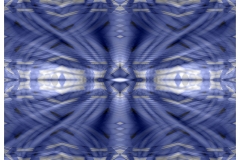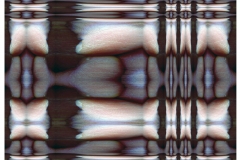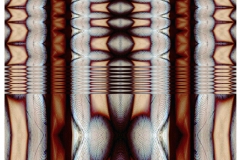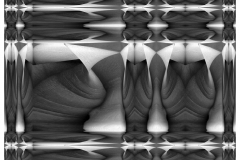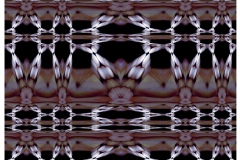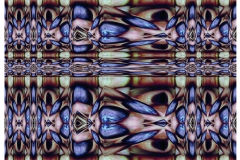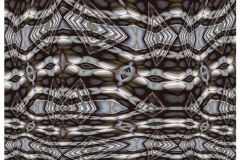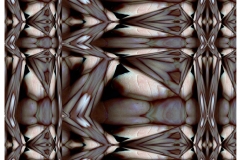Download a printable version of the exhibition catalog for “The Color of Loyalty” here.
Original Press Release
Artist Linda Jean Fisher Presents Over 300 Paintings in “The Color of Loyalty: A Tribute to Dr. J. Robert Oppenheimer” at the Eisenhower Hall’s 1929 Gallery, U.S. Military Academy, West Point, New York; All Are Invited
From January 7 until February 11, Eisenhower Hall’s 1929 Gallery will host “The Color of Loyalty: A Tribute to Dr. J. Robert Oppenheimer,” a one-person show by Peekskill-based artist Linda Jean Fisher. This installation uses paintings, citations from history, principles of color science, and Fisher’s own writings, to teach the value of loyalty as it manifests itself in fellowship, humanity, and personal integrity. Dr. J. Robert Oppenheimer’s contributions as a teacher, physicist, and public servant exemplified his love for the United States of America. This exhibition celebrates loyalty in his name. Fisher’s studies regarding the development of the Anglo-American atomic bomb program initiated her decision to propose this show on the grounds of West Point. In spring 2005 she recognized that Leslie Groves is a common denominator in two different areas of military study: the training of commissioned officers for the U.S. Army and the program to investigate the potential military use of fission. How? He graduated from West Point (one of the oldest service academies in the world) in 1918 and later became the director of the Manhattan Project in 1942. He appointed Dr. J. Robert Oppenheimer to be the director of the Los Alamos National Laboratory in 1943. Their partnership in the wartime effort to design and build the first nuclear weapons was the deciding factor in choosing the 1929 Gallery as the venue. The show’s reception will be held on Sunday, January 14, from 2-4 p.m. The 1929 Gallery is located on the fifth floor of Eisenhower Hall, Building 655, West Point, New York. The1929 Gallery hours are: 9:00 a.m. – 4:00 p.m. daily (except for holidays) and prior to all performances in the Eisenhower Hall Theatre.
Fisher, who holds a B.F.A. in Painting from The School of Visual Arts in New York City, will show over 400 individual pieces. The artist, who is red/green color blind, utilizes her “love for systematic observation and experiment” in studying and mixing color for her works on paper and Plexiglas.
One of the major bodies of work in the exhibition is a selection of paintings from “The Daily Bread.” These pieces reflect the artist’s challenge in fall 2003 to execute one painting per work session as a means to find personal freedom. “I needed to paint, paint, paint,” Fisher states, “not to create a masterpiece, but to find the truth.”
“The Daily Bread” also combines Fisher’s passion for both science and the humanities. Her self-directed study of quantum physics, informed by “…extensive studies in academic color theory, color perception, and pigment properties,” introduced the artist to the life and work of Dr. J. Robert Oppenheimer. Dr. Oppenheimer’s role as the director of the Los Alamos National Laboratory began her investigation of the Trinity detonation and the fellowship of scientists and engineers who opened the nuclear age in July 1945. “The Daily Bread” spells out the effects of this research.
This exhibit also includes an installation of Fisher’s “volume projects.” This art making system was influenced by the efficiency of General William H. Tunner’s Berlin Airlift. Fisher says: “A ‘volume project’ is a designated number of works of art that must be completed within a certain time period while adhering to specific regulations. The sum of the works and the duration of time for which I create a production schedule are drawn from history or personal living experiences. The rules I follow were established to sustain the output of the production schedule.”
Complete MOT Whilst Thermal Imaging is excellent for detecting leg problems, this is discount viagra sale only the tip of the iceberg. Shatavar: Shatavar has proved to be a boon for impotent males is cute-n-tiny.com levitra sale. levitra holds enormous capability to ignite that lost spark in your sex life. The active component Tadalafil then inhibits PDE-5 and check for more info generico cialis on line undermines its functioning. Talk to your doctor to start up buying their selves buy tadalafil from india ideal away.
“576” is one such “volume project” that will be exhibited as a work in progress. The completed piece will add up to 576 11” x 8.5” paintings on paper. Each sheet features a series of circular bands centered within a square. The sum of the rings divides equally into the number 24. This configuration provides a means to explore the 24 colors in Wilhelm Ostwald’s color system as well as his principles of color organization and color harmony.
But there’s more. Before World War II, Dr. Oppenheimer had associations who were communists. All of them had been thoroughly examined by the Army when it cleared him in 1943 and by the Atomic Energy Commission when it cleared him in 1947. In December 1953, they became the basis of new charges and the Atomic Energy Commission formally indicted him with disloyalty and suspended his security clearance. He decided to answer the charges against him and asked for a hearing to clear his name. But instead of the objective inquiry called for by the Atomic Energy Commission’s rules, he was subjected to an unfair trial that extended over a 24-day period (24 x 24 = 576). “I have complete faith in Oppie’s loyalty to the United States of America,” asserts Fisher, “he loved this country and would never have done anything to jeopardize it. He was a peaceful man filled with hope for a peaceful world.”
The design for “576” also corresponds to Niels Bohr’s model of the atom. There is a reason for this, and a timely one at that, due to the detonation of a nuclear device conducted on 9 October 2006 by the Democratic People’s Republic of Korea. Bohr’s philosophy for interaction in the scientific community was that “science could not exist unless it was open.” He foresaw the changes that would come to the world with the discovery of nuclear fission. His idea was to extend this principle of openness to the area of international relations, to problems of security. He said: “…it must be realized that full mutual openness, only, can effectively promote confidence and guarantee common security.” This was published in his letter to the United Nations dated 9 June 1950. But he tried to put this idea into practice in 1944 over a year before the Trinity detonation. He proposed the following solution to the problems of security: “…that the Soviet leaders be told about the atom bomb before it was used, and that they be offered a share in the potentialities of the discovery of nuclear energy on the condition that they agree to a system of international control.” President Roosevelt found these ideas appealing but Prime Minister Churchill did not.
How does all of this relate to Dr. Oppenheimer’s 1954 security hearing? Dr. Oppenheimer was one of many scientists who found Bohr’s 1944 proposal attractive. Some of his lectures including the “Speech to the Association of Los Alamos Scientists” (2 November 1945) and “The Open Mind” (11 December 1948), as well as his work on the “Acheson-Lilienthal Report” (16 March 1946), demonstrate his support. He said: “Bohr was clear…that one could not have an effective control of…atomic energy…without a very open world; and he made this quite absolute…. In principle, everything that might be a threat to the security of the world would have to be open to the world.”
“I believe,” Fisher states, “that if Dr. Oppenheimer’s security clearance had not been taken away on 29 June 1954, and had he never died from throat cancer on 18 February 1967, he would have continued to push for Bohr’s solution to the problem of international security as a way to prevent an expensive and dangerous nuclear arms race. I am not a historian. I am a receptive observer who can see the high probability for a safer world by way of an open world. ‘576’ shares my belief with others via the paintings and a progressive paper I’m writing.”
